Download The Racing Line on iOS today and get 70% off a year's subscription!
Despite executing what Laurens Vanthoor described as a 'perfect' race, Porsche were unable to topple Ferrari at Le Mans, with the Italian manufacturer winning for the third straight year.
'In the end, I think we can proudly say that we executed a perfect race,' Vanthoor said in the post-race press conference.
'No mistakes. No contact. No off track. Not a bad pit stop. Everything went super smooth. That's maybe why we're sitting here in second place.'
After, Only Endurance asked Vanthoor what they needed to do to beat Ferrari. His answer was just two words long.
'Be quicker.'
But is this all they could have done? And just how much quicker? Let's take a dive into the data to find out.
These long, in-depth posts take a lot of time and effort to put together. If you'd like to show you like these posts and want more, the best thing you can do is support us. We're fully independent and are committed to not running Google ads. You can support us for £1/$1/€1 a month. Thank you!
Porsche were with Ferrari on pace — sort of
The first thing we need to look at to examine why Ferrari were able to win is to look at the average pace. To do this, we've calculated the average lap time of each car’s top 20% quickest laps.
When you average out each hourly pace figure into one average lap time value, it's very close. The #83 Ferrari 'wins' on 3:28.575 for top 20% pace, with the #50 Ferrari second on 3:28.635 and the #51 Ferrari third on 3:28.652. The #6 Porsche is just 0.009 back on 3:28.661, less than a tenth a lap slower on average than the #83 Ferrari.
However, when you look at each hour independently, this starts to unravel a little bit.
If we split the race up into 24 parts — hours —, we get 24 individual average lap times for each car, with the top 20% pace from each hour logged.
Looking at the hourly pace, Porsche were right up there. But Ferrari were one step ahead. The #6 Porsche was quickest in the 4th hour, with a lap time of 3:29.063, just under two hundredths quicker than the #83 Ferrari.
Laurens Vanthoor was at the wheel of the Porsche during the majority of this hour, with Matt Campbell replacing him for the last 20 minutes. Likewise, Robert Kubica was behind the wheel of the #83 Ferrari, with Ye replacing him at roughly the same time Campbell replaced Vanthoor.
The other hour the #Porsche was quickest was halfway into the race, in the 12th hour. This, again, was shared by Vanthoor and Campbell, just after the race's one and only appearance of the safety car came in. The second fastest car in this scenario was the #50 Ferrari, but was over half a second slower than the #6 Porsche, in the lead of the race.
Porsche were also never quicker if you split the race into quarters. The #6 car was the second quickest car, on average, in both opening quarters of the race. This tailed off a little in the second half as Ferrari gradually upped the pace from all three cars. In the third quarter the #6 Porsche was fourth fastest, while in the last, they were fifth quickest.
But, in that last quarter, the #83 was actually slower on average – only slightly, but still slower. The car had recurrent gearshift problems when downshifting, acknowledged by Ferrari post-race, that likely slowed Kubica down. That said, the Pole, who did more than 10 hours at the wheel of the car, was still quickest in the final hour as he pushed to take victory at La Sarthe.
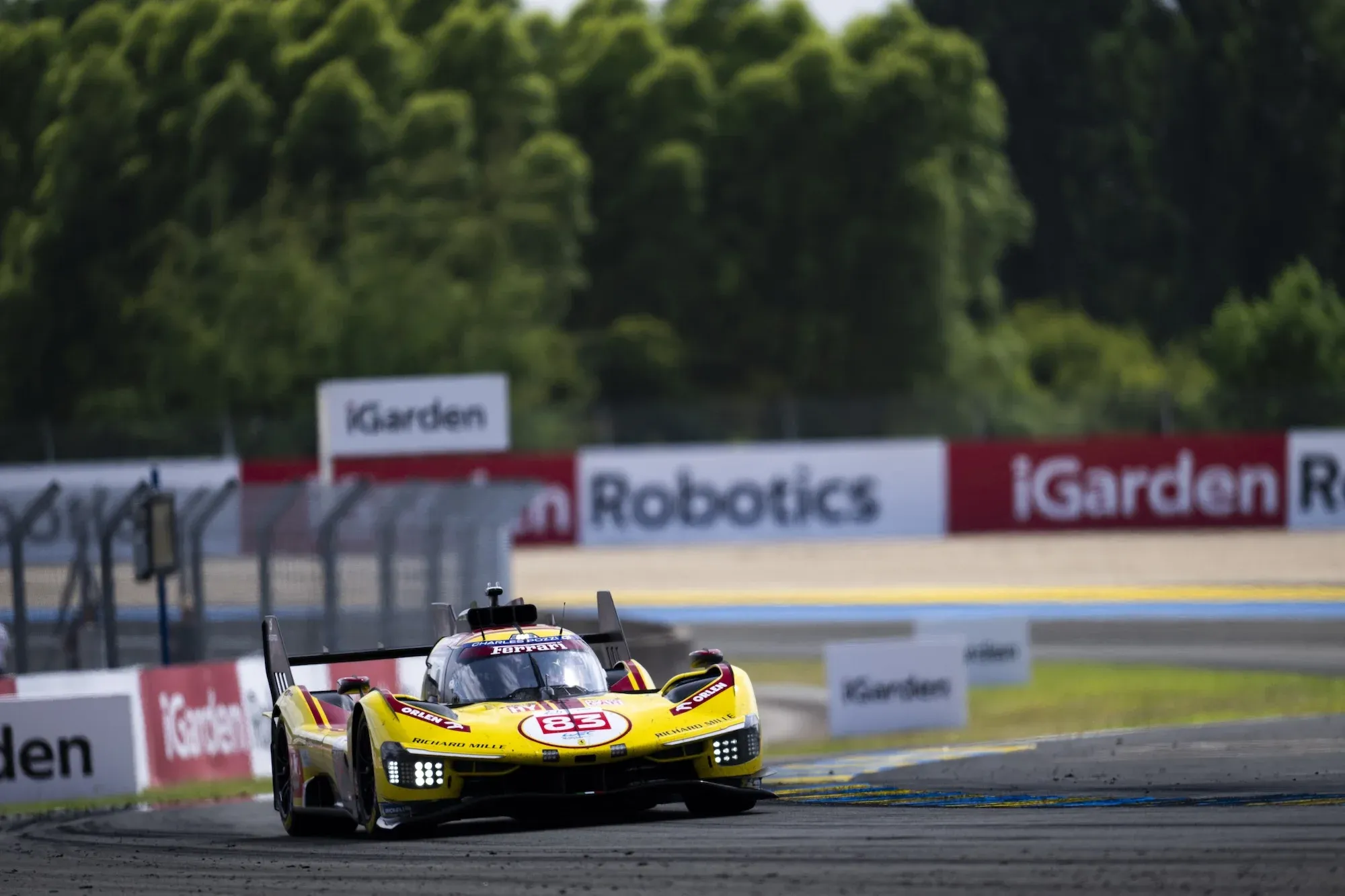
The #83 Ferrari's pace
A quick sidebar to note, briefly, that the #83 was very quick all race. It was the fastest car in eight hours out of 24. And in the hours it wasn't quickest, it was the second quickest car four times, and third quickest another four.
'Congrats to #83 guys. For the last two weeks, they've they've been above and quicker,' said #51 Ferrari's James Calado in the post-race press conference.
'We knew from the start that they would be a huge challenge. We weren't quick enough.'
Often the factory Ferraris, the #50 and #51, are the faster of the Ferraris, with the 'satellite' or 'customer' #83 car a step behind. This wasn't the case at Le Mans — the quicker Ferrari was the 'non-factory' car, albeit run by the same team who runs the factory cars, although not necessarily the same team members.
Porsche's 13-lap stints
Porsche knew, before the race, that competing with Ferrari on pace was going to be hard. Just consider what Laurens Vanthoor told Only Endurance before the race.
'I'm a bit worried about one brand in particular, which I think is standing out, let's say.'
Unfortunately, he wouldn't expand further, but it was obvious even pre-race who he meant.
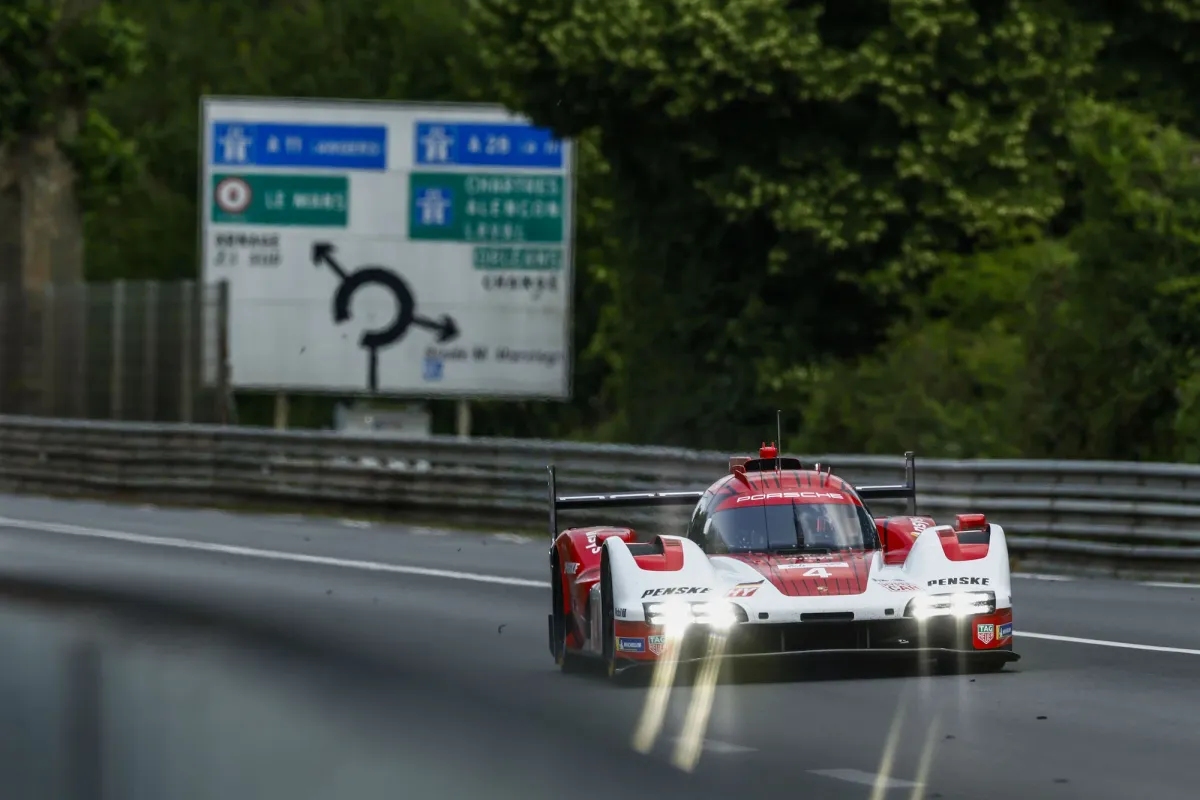
So, if Porsche knew it likely wouldn't be able to take the fight to Ferrari on pace, what else could it do?
The old adage: the less you stop the more time you're racing. So, Porsche decided to do 13-lap stints, as opposed to the 12-lap stints Ferrari were planning to do, based on practice.
For eight consecutive stints, from the fourth stint to the 12th, the #6 Porsche completed a 13 lap stint. At the same time, the #83 Ferrari alternated, from 12-lap stints to 13-lap stints.
This 13-lap stint structure was interrupted by a slow puncture, when Kevin Estre had to pit four laps into a stint in order to rectify it. After this, he continued doing 13-lap stints for another two stints, before Vanthoor climbed into the car.
So, while the strategy didn't entirely work — Ferrari were able to match Porsche on 13-lap stints — it did end up saving the Porsche around 30 seconds in the pits prior to the safety car. The #6 car had a lead of around 16 seconds prior to the neutralisation, so the strategy was working.
Unfortunately the safety car came at the wrong time for Porsche, eliminating their lead and neutralising the advantage they had on the strategy.
The #83 car spent two minutes extra in the pits on lap 184, when the cars stopped under safety car. This was due to the quirk of having three safety cars at Le Mans, with the car needing to wait until the next safety car train to pass until it could rejoin.
Because under the new(ish) safety car rules, the field gets bunched up again behind a single safety car before going green, it didn't lose that much time.
In any case, they only lost a single position, to the #8 Toyota, which after the safety car had Ryo Hirakawa at the wheel.
Now, the #6 Porsche did save an extra stop over the course of the race. The #6 pitted 31 times over the course of the race, while the #83 pitted 32 times. But, the #83 got a penalty at 7am on Sunday morning, with Phil Hanson at the wheel for a yellow flag infringement at marshal post 21, Mulsanne Corner. Remove this and they had the same number of stops.
If you also remove Porsche's only unscheduled stop of the race as well — for the slow puncture on lap 145 — Porsche did save a stop, in theory. But this is also getting too far into the domain of what-ifs.
The #50, for the record, pitted 33 times, and the #51 35 times, although two of these were penalties, one drive through and one stop/go.
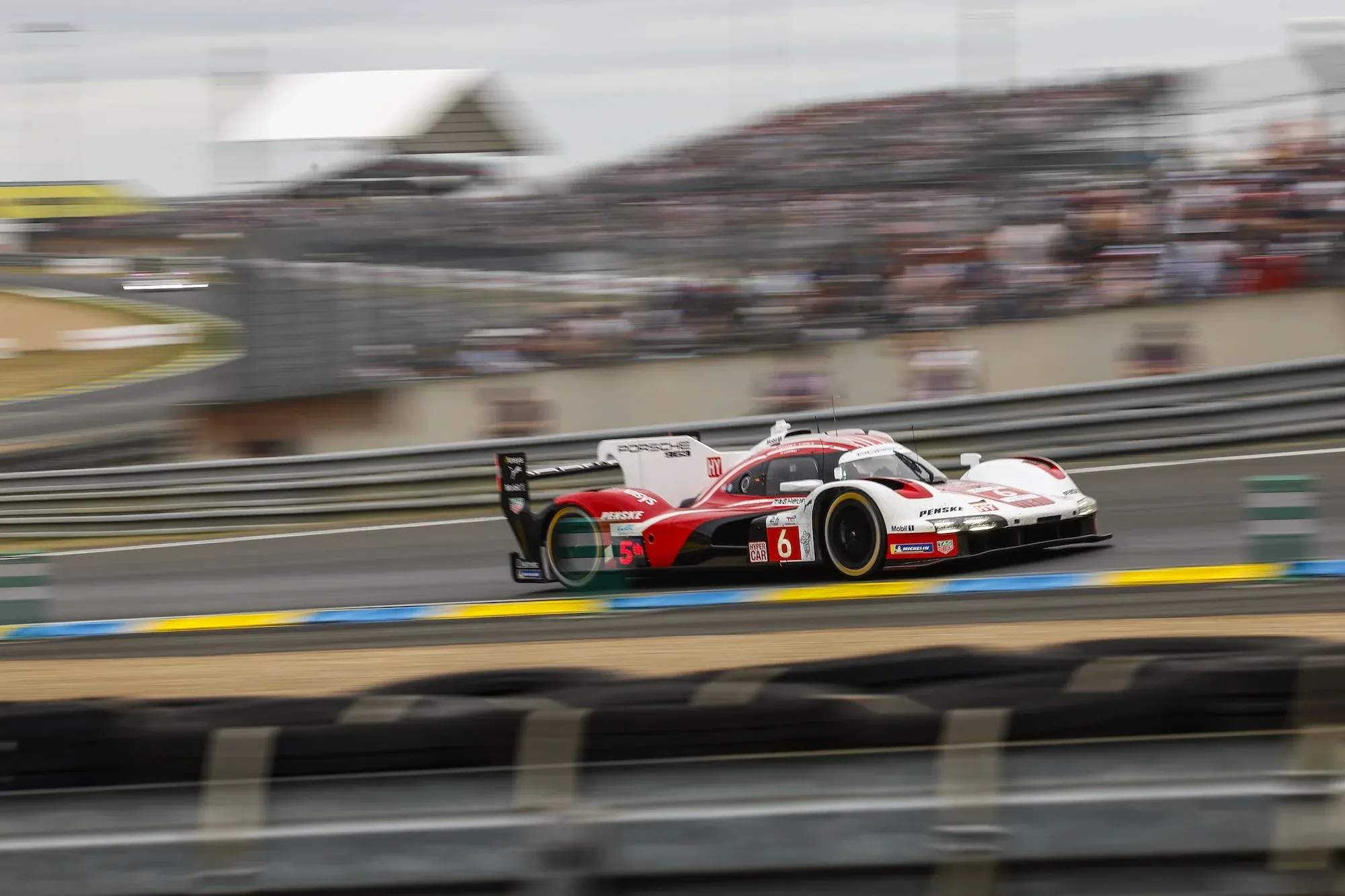
The #6 didn't get any penalties at all, as Vanthoor alluded to in the quote at the start of this article.
Unfortunately, as we'll look at in a minute, after the safety car Porsche didn't return to 13-lap stints.
But even with spending more time in the pits, the pace Ferrari had in hand meant the quickest Ferrari of the three, the #83, was able to take victory.
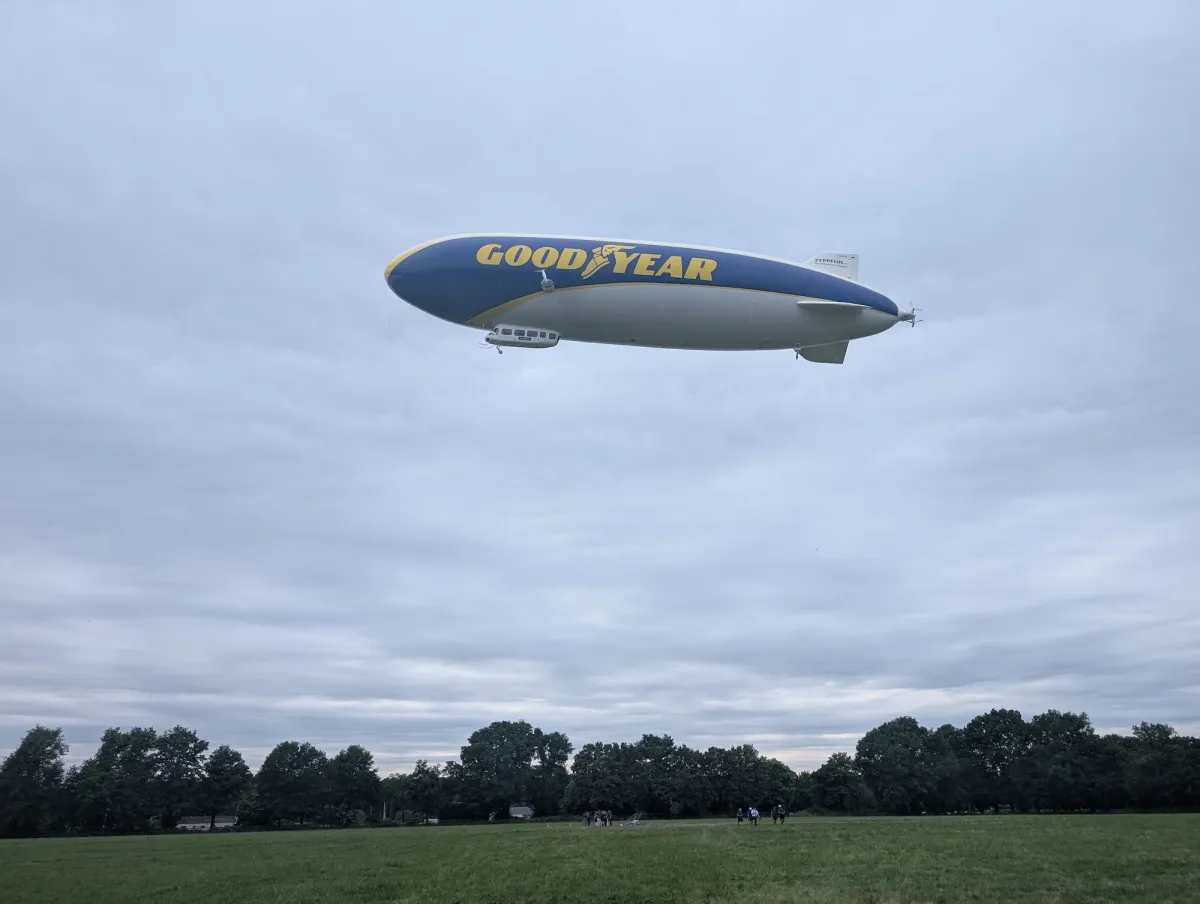
Did Porsche lose a minute when the safety car came out?
One thing I've heard said was Porsche were screwed by the safety car when they were leading in the 11th hour of the race. That without that, they could have won.
And yes, that is possible. They were leading before the safety car came out; Laurens Vanthoor had a healthy 16 second lead over Kubica in the #83 Ferrari.
It's well known that the Porsche 963 tends to prefer cooler conditions over warmer. Le Mans was a very good example of this, with Porsche coming into their own during the hours of darkness in France.
Estre and Vanthoor had built this up gradually over the preceding hours, often going a lap longer on fuel and extending the stints over the Ferraris they were battling against.
The Frenchman held a lead of around 27 seconds in the ninth hour of the race. He was managing this gap, before stopping on lap 158 and temporarily relinquishing the lead. Kubica in the #83 Ferrari stopped four laps later, with his stop taking nine extra seconds.
The next stop saw a driver change and full service stop for the #6 Porsche, Vanthoor in for Estre. This extinguished the lead Estre had built up, but whatever Estre can do, Vanthoor can do too. Over the next 12 laps, around 40-45 minutes, Vanthoor re-extended the gap to Kubica, to 16 seconds when the safety car came out, roughly 11 hours,12 minutes into the race.
So, Vanthoor lost that 16 seconds. After the safety car came in, he was able to re-extend the lead to around 8 seconds. He had Toyota's Ryo Hirakawa behind him, and Yifei Ye, who'd replaced Kubica at the wheel of the #83 in third. But there was no getting that pre-safety car 16 second lead back. And remember, the #83 Ferrari won the race by 14 seconds at the flag at 4pm on Sunday.
Porsche's double driver stint strategy
The big issue here was the next few rounds of stops. The leading group, comprising Vanthoor, Hirakawa, Ye, Marciello in the #15 BMW, and the two factory Ferraris of Miguel Molina in the #50 and Alessandro Pier Guidi in the #51, pitted on laps 198-199.
Porsche elected at this time to driver change, from Vanthoor to Matt Campbell. This extra 20 or so seconds in the pits lost them track position, shuffling them down to fifth, later sixth when Molina overtook Campbell.
Porsche then changed driver again, two stints later, to Estre, losing more time and dropping them over a minute and half off the lead.
While it's hard to say for sure what Porsche's strategy was here, it seems they were double stinting their drivers. Other teams, meanwhile — the #83 Ferrari for example — were triple stinting, a more efficient way of minimising time in the pits.
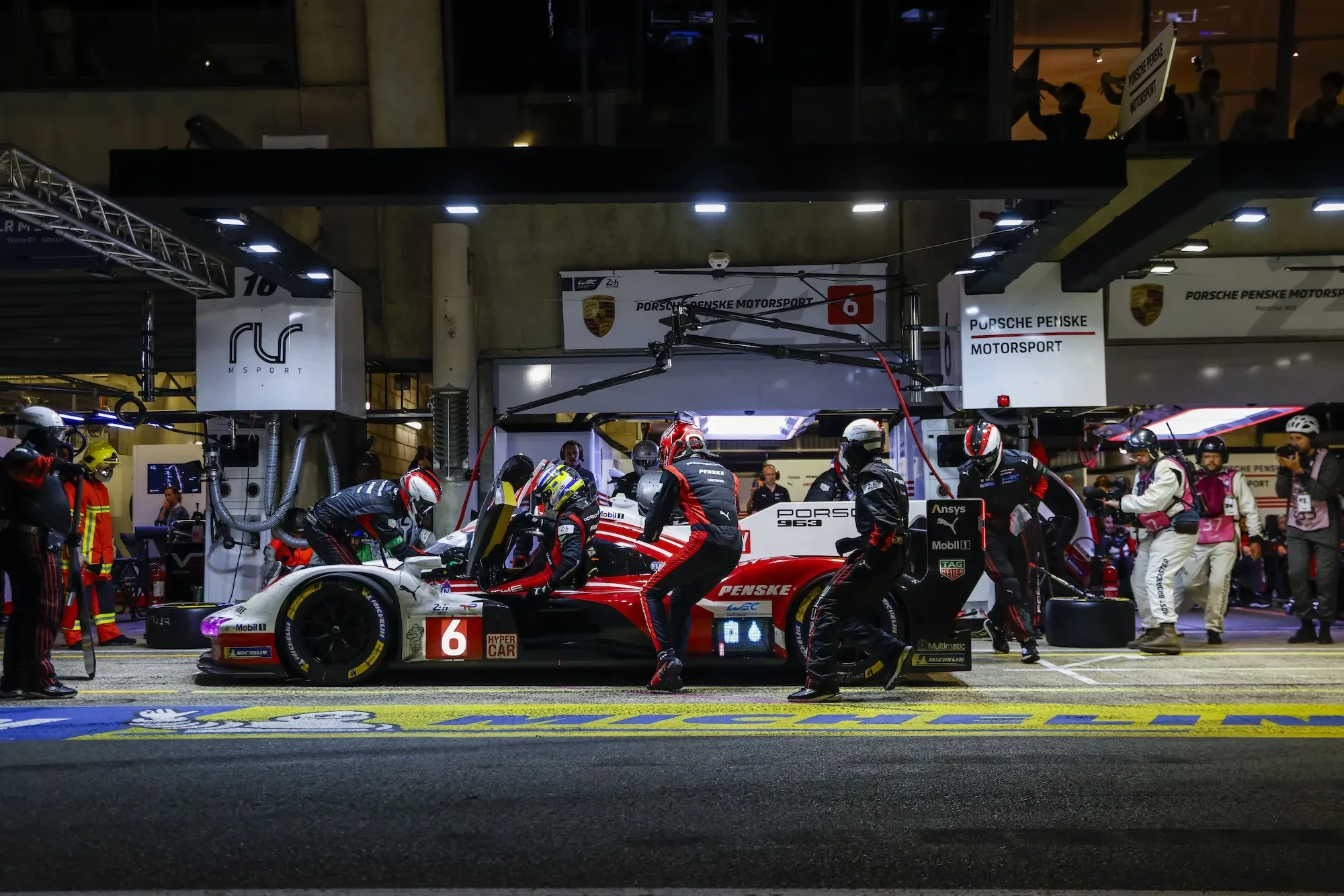
The Ferrari crew were changing driver and tyres every third stop, while Porsche were seemingly doing this every second stop (although we can't know the latter for sure, since we can't get tyre data from the race. Come on, WEC!).
That said, though, over the course of the race, #6 Porsche spent 3 minutes 29 seconds less in the pits than the #83 Ferrari. That's essentially a lap of La Sarthe at Hypercar speeds. So Porsche's pit strategy worked out, even with double stinting their drivers for more than half the race. And, two minutes of this was due to the previously-noted safety car quirk while the #83 was in the pits.
Support Only Endurance's independent sportscar journalism today from £1/$1/€1 a month
Final thoughts
Given Ferrari's relentless pace at La Sarthe, beating them would have taken something extraordinary from Porsche. They were truly flawless, only really losing time for factors beyond their control, like slow punctures or safety cars (and maybe double stinting drivers and tyres).
Urs Kuratle, Porsche's factory director of LMDh, refused to say it was perfect, while summing up Porsche's race almost to a tee, in an IMSA-hosted media call after Le Mans.
'I refuse to talk about perfect races, because they aren't really existing in 24 hour races. But anyway, the #6 car had a very very good race,' he said.
'We had no penalties. During the race, the actual race, we had no mistakes. Pit crew were perfect. We had the fastest pit stops, and we spent the least amount of time in the pit lane.
'And, just as a fact, one of the numbers I know is 3 minutes, we spent 3 minutes less in the pit lane and the winning #83 car. So that's a lot. But still, that's only P2.'
And that's all there is to it. Ferrari were simply quicker, as Laurens Vanthoor told Only Endurance after the race. And to beat them, Porsche will have to be quicker still. Such is life in motorsport.
Feature image: Nick Dungan / Drew Gibson Photography / Porsche
This post is brought to you by The Racing Line, your personalised motorsport calendar app. Get session times for over 150 series, from rally to bikes, single seaters to sportscars with customisable notifications and built-in streaming. Download on iOS today!





